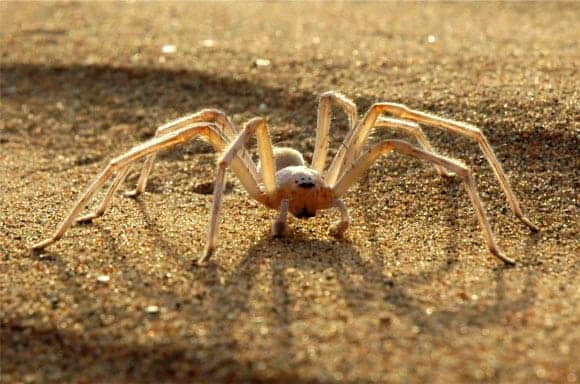
A most peculiar spider has been discovered by entomologists in the sandy dunes of Morocco’s southeastern desert, Erg Chebbi. Called Cebrennus rechenbergi, the spider can perform flic-flac jumps at almost 2 m/sec, allowing it to swiftly cross the desert. In fact, the common name of the species is the Moroccan flic-flac spider.
“Like a gymnast, it propels itself off the ground, followed by a series of rapid flic-flac movements of its legs,” explained Dr Peter Jäger from Senckenberg Research Institute, who describes Cebrennus rechenbergi in the Zootaxa paper.
“This gives the spider great flexibility – uphill, downhill or on level ground, Cebrennus rechenbergi can move along with ease. It displays this behavior when provoked, e.g., by a congener, a camel spider, a scorpion or a human.”
Besides being an accomplished ‘athlete’, the Maroccan spider is also a master builder as proved by tube-like domicile in the sand it erects, attached by silk threads. This shelters the spider against the sun and predators.

Cebrennus rechenbergi was described in a paper published in the journal Zootaxa. Check out the video below to see the spider’s acrobatics.
Was this helpful?



